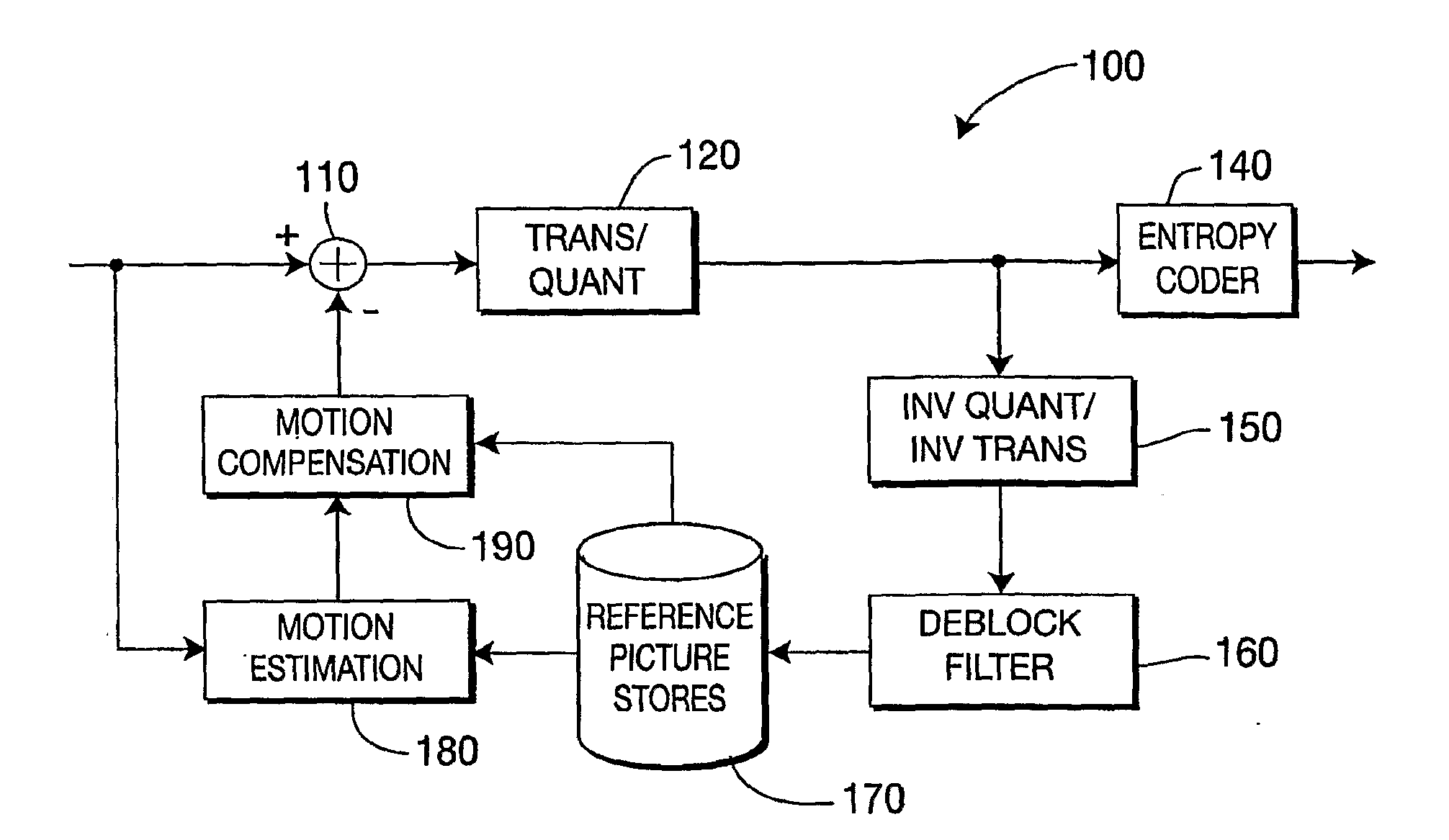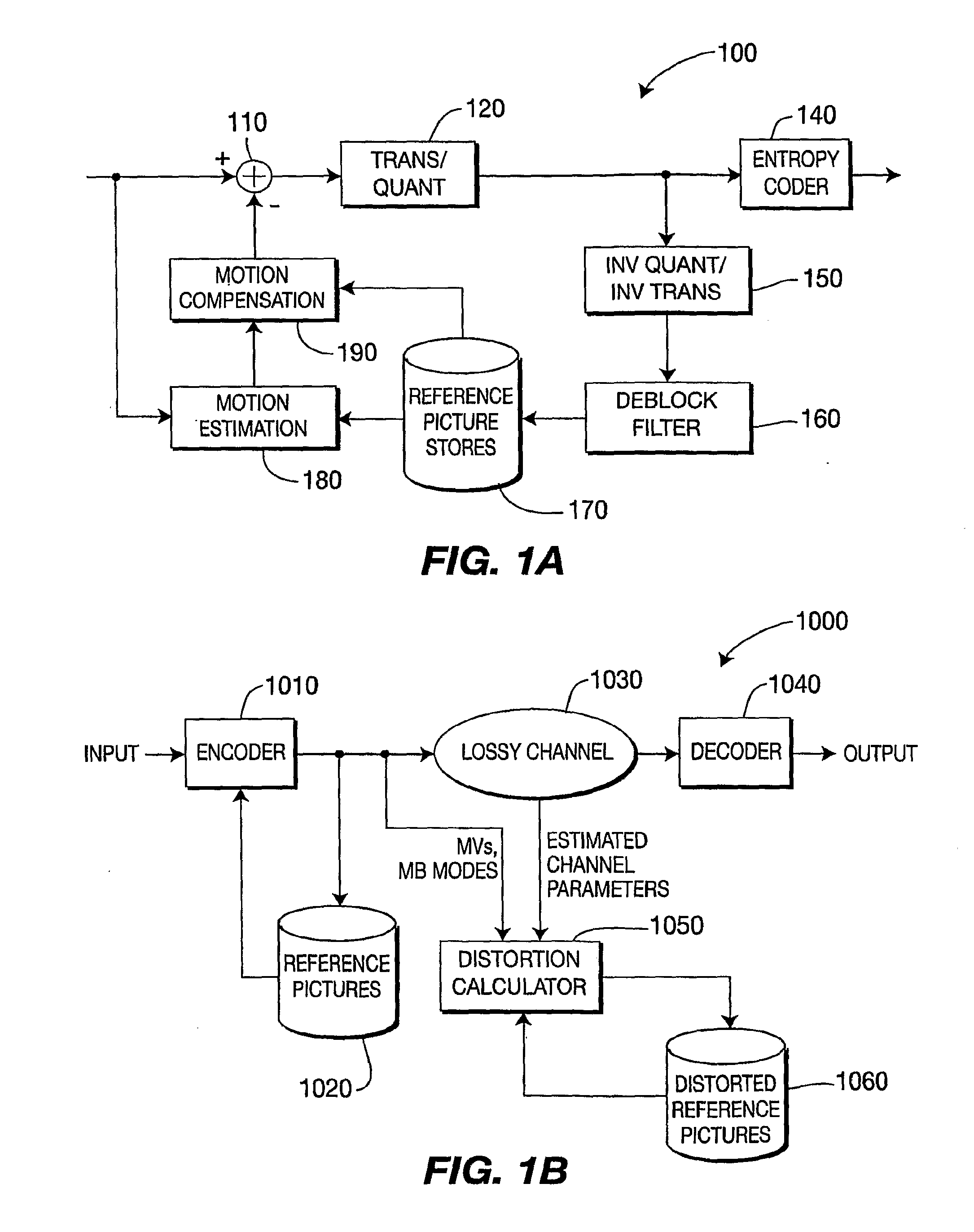Method and apparatus for determining expected distortion in decoded video blocks
a video block and expected distortion technology, applied in the field of video encoding and distortion calculation, can solve the problems of how to determine the expected distortion at the decoder, the distortion seen at the decoder is different from that at the encoder, and part of the transmitted video bit stream may be los
- Summary
- Abstract
- Description
- Claims
- Application Information
AI Technical Summary
Benefits of technology
Problems solved by technology
Method used
Image
Examples
Embodiment Construction
[0029]The present principles are directed to methods and apparatus for determining the expected distortion in decoded video blocks. The expected distortion may be determined with respect to different candidate motion vectors and coding modes. Advantageously, various embodiments of the present principles may be implemented with respect to one or more of at least three different error concealment techniques that may be used at the decoder.
[0030]The present description illustrates the principles of the present invention. It will thus be appreciated that those skilled in the art will be able to devise various arrangements that, although not explicitly described or shown herein, embody the principles of the invention and are included within its spirit and scope.
[0031]All examples and conditional language recited herein are intended for pedagogical purposes to aid the reader in understanding the principles of the) invention and the concepts contributed by the inventor to furthering the ar...
PUM
 Login to View More
Login to View More Abstract
Description
Claims
Application Information
 Login to View More
Login to View More - R&D
- Intellectual Property
- Life Sciences
- Materials
- Tech Scout
- Unparalleled Data Quality
- Higher Quality Content
- 60% Fewer Hallucinations
Browse by: Latest US Patents, China's latest patents, Technical Efficacy Thesaurus, Application Domain, Technology Topic, Popular Technical Reports.
© 2025 PatSnap. All rights reserved.Legal|Privacy policy|Modern Slavery Act Transparency Statement|Sitemap|About US| Contact US: help@patsnap.com



